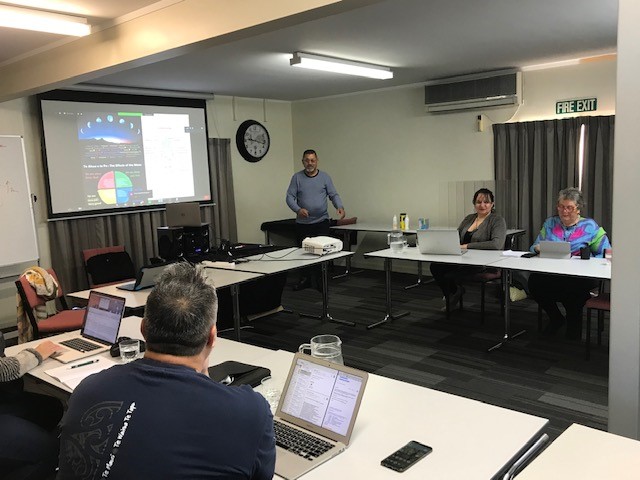A strategic approach to partnership
Authentic partnership with mana whenua takes pride of place in the BioHeritage Challenge. But what happens when seven different teams all want to honour this process in a similar field of work?

That’s the question (and potential challenge) our Ngā Rākau Taketake (NRT) teams face. Each of the seven research themes has large components of mātauranga Māori and kaupapa Māori mahi, which aim to enable and adequately resource mana whenua to engage with scientists, researchers and agencies to combat kauri dieback and myrtle rust.
So early this month, Māori co-leads and advisors from across the seven NRT themes came together to develop a Mana Whenua Integrated Work Plan (Work Plan).
The co-leads and invited experts in mātauranga Māori reviewed existing work plans and identified key areas of investment across NRT that required mana whenua engagement.
The proposed Work Plan will establish a foundation for the engagement of mana whenua with NRT research and development. It will act as a guide for the Māori co-leads to ensure that Te Tiriti o Waitangi and WAI262 are provided for, and that mātauranga Māori authorities are operating in a culturally safe, appropriate, and monitored environment.
Conservation & Restoration co-lead Alby Marsh (Plant & Food Research) says some of the key challenges to adopting mana whenua and mātauranga Māori into research projects include building relationships with mana whenua, and building and maintaining trust.
“In a mana whenua determined engagement, scientists may not be able to rely on their existing tangata Māori relationships. These local sensitivities need to be considered to ensure that existing and emergent relationships and interests are managed,” Alby says.
Without a proper strategy in place, research might not progress as planned and opportunities could be missed on both sides.
The proposed Mana Whenua Integrated Work Plan approach will inform efficient investment by avoiding duplication of effort, and effectively weaving together mātauranga Māori and Western science.
Posted June 2020